From Mahound to Muhammad: Evolution of Western Writings about Prophet Muhammad (ﷺ)
In his controversial novel ‘Satanic Verses, Salman Rushdie has a character named Mahound who plays the leading character as a businessman who encounters the archangel Gibreel and transcribes messages from him. This work sparked a worldwide firestorm that prompted Khomeini to issue a fatwa demanding the execution of Rushdie and his publishers. Here, a question arises who is Mahound and what is the problem with this term?
In fact, the Mahound (Mahoun- originated from Old French Mahun), was a derogatory term for Muhammad (ﷺ) that was used in mediaeval and later European literature. It has traditionally been adopted by Christian writers, particularly in relation to Prophet (ﷺ) portrayed as a pagan god or an evil force behind a false religion.[1]
Thus, Western society has a long history of humiliating Islam and the Prophet. So many Western scholars and writers depicted the personality of the Prophet Muhammad (ﷺ) from the 8th century to the present with varied perceptions. To understand this, it’s necessary to look for common factors in early polemics and revolutions in Western approaches towards the Prophet.
As mentioned earlier, much has been written about Muslims and their faith in European literature. And indeed, much of them have been directed at the Prophet of Islam. The early western works on the prophet Muhammad (ﷺ) were written with powerful and hostile stereotypes based on Christian doctrinal unity and opposition to Islam. These works were robust enough to survive the failure of the crusade, the rise of Protestantism, the Enlightenment and the scepticism.
The campaigns to defame the Prophet of Islam by western scholars and churchmen continued throughout medieval times, taking a direct polemical form. It became constitutive of European identity, as hatred and fear of Islam were used by religious leaders as the cement to unite the warring Europeans.
The theme of ‘Moors' was used to villainise Muslims as an element of hatred, or an enemy to be overpowered, by heroes even among the more secular figures of the European Renaissance, such as Shakespeare, Chaucer, Milton, Dante, Marlowe etc. At this same time, Luther and other figures introduced the idea of Muhammad, the leader of Muslims, as the “Anti-Christ”.
During the Middle Ages, Christian intellectuals, particularly those from the West, used to read the Prophet from three sources. One of them is Arab-Christian writings on Muhammad (ﷺ). The second is Byzantine works about the Prophet Muhammad. Spanish writings are regarded as the third source. As a result, the perspectives differed depending on the sources.[2]
Hence, the Prophet was depicted as a hypocritical imposter, especially in the writings of Thomas Carlyle (1795–1881), Scottish essayist and humorist, who saw the Prophet’s case as absolutely confusing. His essay on 'the Hero as Prophet’ had a significant enough impact on casting doubts on the Prophet’s disciples. Compared to many of his contemporaries, George Sale[3], whose English translation of the Qur’an was released in 1734, had a more favourable opinion of the Prophet. Voltaire was among those who were influenced by his lengthy preface, which was published separately and included a brief biography of the Prophet.
Even during this period of growing intolerance, some voices attempted to challenge the widespread, harsh, and misinformed prejudice. Like George Sale, he was a bold voice who was not afraid to speak up in public. He started his work with a statement including a sketch of the Prophet’s life. Sale was harshly chastised for his moderately favourable words about the Prophet. Consequently, such mediaeval perspectives of the Prophet did not survive the last few centuries intact.
Something essential seemed to have changed by the 19th century when German philosopher George Wilhelm Friedrich Hegel (1770-1831) praised Islam’s historical contribution. Through these types of narrations, the typical portrayal of Muhammad as the “anti-Christ” had fallen out of favour by the middle of the nineteenth century. On the other hand, most modern western academics have adopted a new strategy and developed an understanding of Islamic culture, history, and society based on its values and ethics. Critiquing Orientalism and its perceptions were just the beginning.[4]
From here, the emergence of modernism and Orientalism shifted the stereotypical perceptions of Western scholars and writers of the Prophet Muhammad (ﷺ). This evolution of perspectives and approaches are crystal clear in the modern works on Prophet apart from the writings in the medieval, crusade, renaissance and enlightenment period.
Further to early methodological critiques and historical accounts, new portraits of the Prophet Muhammad based on independent research were released. These writings have been approached from both Muslim and non-Muslim perspectives. Karen Armstrong, Martin Lings, John Esposito, and Gai Eaton are some excellent examples.
Over time, many genuine historians have kept a secular and realistic approach when characterizing Muhammad (ﷺ). Thus, sīra literature became popular in the west by the 21st century as the trend of prophetic biography writing spread worldwide. Some of them are panegyric and some others are blasphemous.
Several comprehensive research studies were undertaken focusing on this evolution of perspectives to explore how Muhammad's image has been projected in Western writing from the Middle Ages to the Present. Some works are listed below:
- About Muhammad: The Other Western Perspective on the Prophet of Islam
The book edited by Abdelwahab El-Affendi examines how Islam is viewed in the west by showcasing the contributions of several European experts who have disparate views on Islam and the prophet. Through this book, he gives a short Anthology of western writings on the prophet Muhammad from the 18th to 21st century.
- Muhammad in Europe: A Thousand Years of Western Mythmaking
In this book, author Minou Reeves gives a clear view of the history of western polemics writings. He concentrated on revealing the facts about Prophet Muhammad (ﷺ) which are distorted by Christians. Minou Reeves deals with the methodology of Christians’ approach to Prophetic biography.
- Faces of Muhammad: Western Perceptions of the Prophet of Islam from the Middle Ages to Today
The book is written by John V. Talan. In this book, he focuses on Mahomet (Prophet Muhammad ﷺ) as European men have portrayed him throughout history, putting aside the real Muhammad and Muslim images of God’s Beloved Messenger. He demonstrates how the prophet of Islam takes on drastically different forms and how each one makes sense within its particular social, philosophical, and religious frameworks.
Here, let’s check out some modern works on the prophet Muhammad (ﷺ) with sincere arguments and approaches towards his personality and ideology.
Muhammad: A Prophet for Our Time
Karen Armstrong, a western scholar, wrote this work. The book covers the entire life of the Prophet Muhammed with considerable emphasis on many important moments. The author addresses all comments directed against the Prophet with appropriate and convincing arguments, especially in response to western critics of Islam.
Muhammad: The Hero as Prophet
In "The Hero as Prophet," Thomas Carlyle argues that Muhammad is the ideal Hero-Prophet. He asserts that Muhammad's leadership and the growth of Islam were made possible by his fortitude, integrity, and truthfulness. Carlyle includes unwavering faith and mental tenacity as qualities of a great hero, as he does throughout On Heroes, Hero-Worship, and the Heroic in History. Carlyle urges his reader to see not the defects but the truth in Muhammad's teachings, showing how Muhammad raised the Arab nation out of darkness by being truthful.
And Muhammad is His Messenger
Annemarie Schimmel’s work, which focuses mainly on the devotion of the Prophet Muhammad, was built over the course of four decades of research by the German author. Schimmel's intense interest in the prophet Muhammad was spurred by how the Sira literature depicted him, and the concept of the "mystical Muhammad" had a significant influence on this work. This is the first book to address every aspect of reverence for the Prophet Muhammad in English.
Muhammad: His Life Based on The Earliest Sources
This book, written by Martin Lings, provides an extensive account of Muhammad’s life, the dates and sites of several Quranic revelations, and the origin of Islam based on Arabic biographical sources as well as collections of sayings associated with Muhammad ﷺ.
In a nutshell, the Western world had also spent many centuries attempting to understand the East and Islam. Studies that have been done in a variety of fields with this purpose have served as an indication of cross-cultural interaction. Europe, in particular, had to learn about the religious culture in order to comprehend Muslims. Without a doubt, Prophet Muhammad was at the heart of this civilization. After the Crusades, the renaissance period, and the age of the Enlightenment, Western intellectuals shifted away from the church’s influence and made various observations about the Prophet. Since the 18th century, a broad variety of apologetic works have appeared in Western literature, reflecting the shifting perspectives on the Prophet Muhammad. In addition to religious publications, the Prophet and his ideology have been explored in a number of historical works and poems. In fact, the Prophet Muhammad (ﷺ) is the o only personality who has been approached by East and West, without any differences of religious background, to study about him and his ideological life.
Endnotes:
[1]El- Affendi, theAbdelwahab “About Muhammed, the other western perspective on the Prophet of Islam”
[2] V.Tolan, John“Faces of Muhammad: Western Perceptions of the Prophet of Islam from the Middle Ages to Today”
[3]George Sale (1697-1736) was a British Orientalist scholar well known for his English translation of the Quran in 1734. Voltaire composed his own essay “De l’Alcoran et de Mahomet” in 1748 after reading Sale’s translation (“On the Quran and on Mohammed”).
[4]M . Zeitlin,Irving “The Historical Muhammad”
About author:
Irshad Ev S/o Ismail Ev is a Post graduate research scholar at Darul Huda Islamic University specializing in Hadith and Related Sciences. His area of interests includes Western sīra literature with special focus on Modern, Orientalist approaches. He currently works on thesis for partial fulfillment titled”Western works on the prophet Muhammad (ﷺ) from 18th to the present : An analytical study on the evolutions of perspectives”. irshadevkyd@gmail.com
Disclaimer
The views expressed in this article are the author’s own and do not necessarily mirror Islamonweb’s editorial stance.

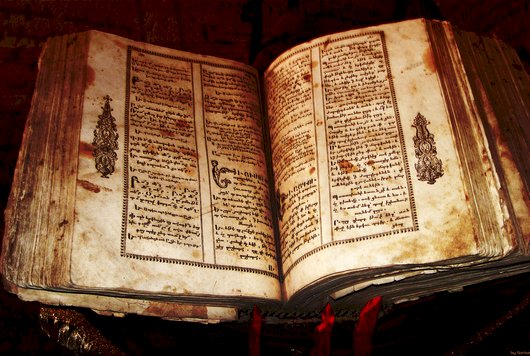



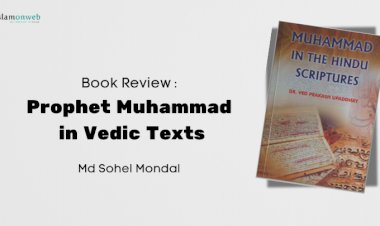

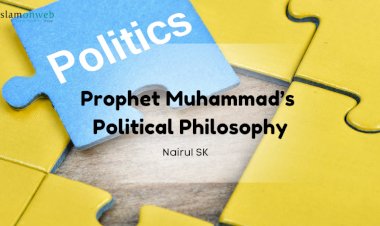
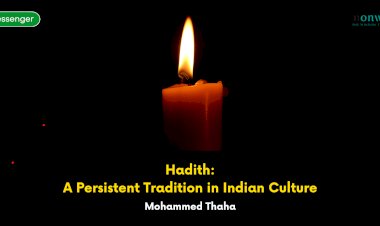

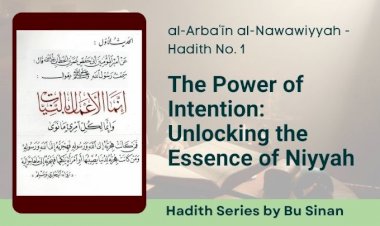














Leave A Comment